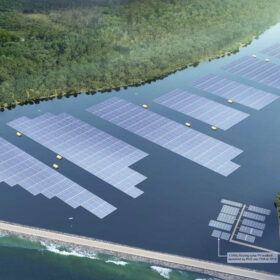Australian firm secures PPA for 700 MW of floating PV plus battery in Sri Lanka
Australia’s United Solar Group has secured a power purchase agreement (PPA) for 700 MW of floating solar and a 1.5 GWh battery project in Kilinochchi, Sri Lanka.
Photovoltaics for marine wildlife telemetry devices
A US research team has tested mini solar modules in marine data collection devices, using animal hosts for water column profile measurements. The findings suggest that submarine PV can effectively operate in these applications at depths of up to 22 meters.
Kenya seeking consultants for 40 MW floating solar tender
State-owned Kenyan Electricity Generating Company PLC (KenGen) is accepting feasibility study applications for the development of a 40 MW floating PV array, backed by German funding.
Malaysia launches 30 MW floating solar tender
Kuala Lumpur-based utility Tenaga Nasional Berhad (TNB) has started accepting applications for the development of a 30 MW (AC) floating PV plant at a reservoir in eastern Malaysia.
South East Asia sees renewed interest in utility scale floating solar
Indonesian president Joko Widodo inaugurated a 145 MW floating solar plant in Java this week, while module manufacturer Husaun Energy said it will supply 60 MW of heterojunction solar panels for Grow Energy’s Thailand floating PV projects.
Sri Lankan government launches twin 100 MW floating solar plant tender
The Sri Lankan government’s Ministry of Power and Energy is inviting applicants to submit proposals for the construction of two 100 MW floating solar plants at the hydroelectric Samanalawewa Reservoir. The aim is to complement and “leverage” the country’s third-largest hydroelectric scheme through PV.
India’s SJVN to build membrane-based floating solar pilot
SJVN Green Energy Ltd. (SGEL) plans to develop a 2 MW floating solar pilot project with Ocean Sun’s membrane-based floater technology.
The ‘next big thing’
The PV industry in Southeast Asia has come a long way since guest author Ragna Schmidt-Haupt, partner at Everoze, reported on solar financing innovation in the region more than a decade ago. In this article, she outlines five factors for success, the newest of which has the potential to become a game changer, and not only in Southeast Asia.
Passive cooling technique for floating PV systems
An international research team has built a cooling tech consisting of heat absorber pipes that are thermally connected to the PV module, heat releaser pipes that exchange heat with the water body, a series of connecting pipes, and a coolant reservoir. The system claims to create a continuous fluid flow that dissipates heat from the PV cells to the surroundings.
Global inventory map of floating photovoltaics
A Chinese-US research group has created an up-to-date spatial datase to identify floating PV systems across the globe. The new tool uses Google Earth images, Sentinel satellite imagery, and multiple spectral indices.








